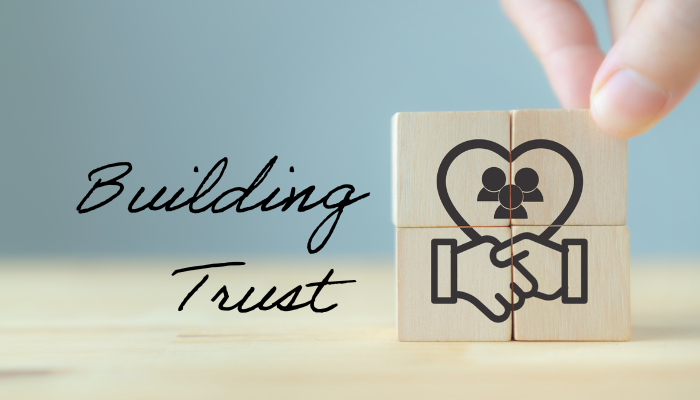
By Rachel Teichberg, CVPM, CVBL, CCFP
It’s undeniable that trust is the bedrock of a successful team, but within veterinary practices I believe we often have cracks in this foundation. On the surface, we show up to work and get the job done but if we look closer there’s clear evidence that shows a lack of trust and psychological safety, creating serious issues within our practices.
Some of the things I’ve experienced might resonate:
- You ask the team for their opinion during a meeting, but no one will talk
- You roll out a new protocol only to be met with eye rolls or heavy sighs
- You watched a co-worker miss a step in a process but won’t give them feedback
- Team leaders or managers postpone or skip annual reviews or one on one meetings
- You get called into the manager’s office and assume you’re in trouble or you did something wrong
- You’re treated disrespectfully and don’t feel like you can’t speak up for yourself
- You’re scheduled to work until 6 but never leave before 7
- You hear people gossip
…You get the picture. Now imagine we’re able to fix these things and create a culture built on collaboration and open communication. Envision a meeting where people honestly (and kindly) share their thoughts on a new initiative, or a team member gives feedback to their coworker when they saw a mistake was made. When we build trust, we’ll also be building a more efficient, productive, happy, and engaged team.
Trust is about truly believing that someone will show up for you in a beneficial way and is built on four main components:
- Reliability – Doing what you say you’re going to do
- Competence – Having the skills and knowledge to do the job or task at hand
- Integrity – Doing the right thing
- Honesty – Being transparent
But if the foundation is broken, how do we create more trust? There has to be an acknowledgement of our current reality, an agreement from the entire team that a change is needed, and a willingness to do the work to build a new culture rooted in trust and psychological safety. A few important components to work on are:
- Open Communication – This will take some time to build so I recommend starting with one on ones. Prepare set questions to review and give them out ahead of time so each person has a chance to reflect and come prepared with responses to make for a more meaningful conversation. As a leader, it’s important to listen and not get defensive. Acknowledge where they’re coming from and ask their opinion about possible solutions. You can then build this concept out into your team meetings by sharing the agenda in advance, having other team members present certain items, or even work in an anonymous suggestion box where team members may initially feel more comfortable sharing their opinions.
- Conflict Resolution – Every person on the team needs to be trained in how to manage conflict in practice because the skills or default mechanisms we have are not necessarily productive or appropriate for work (like yelling, shutting down, storming out, slamming doors, avoiding someone, etc.). Create processes around conflict so your team knows what to do, how do have a difficult conversation, and next steps if it doesn’t get resolved on their own.
- Supportive Environment – We use the word teams for a reason – we work together to achieve a common goal. Start by establishing what the goals are by creating your practice vision. What is the 1-, 3-, and 5-year plan for the practice and how does the team work to support that? Create goals for each person that connect with the long-term plans and give them the tools, resources, and training to follow through. In addition, the team needs to support each other in the day to day, recognizing an opportunity to lend a hand, rally the team, or celebrate a win.
- Encourage Collaboration – Identify ways for the team to work together on projects, especially if they work in different departments. Identify their unique abilities and support them in expressing them. This could look like organizing an event for the practice, creating the processes for a new service, developing a new training program, discussing challenging cases, writing protocols, reimagining the practice’s branding… Anything!
When we build a culture based on trust, we create an environment where our teams can feel comfortable and confident being their authentic selves. As a result, the practice will see a decrease in sick time, turnover rates, and operational costs along with an increase in retention, productivity, efficiency, revenue, as well as client and employee satisfaction. All of that is great, but what will be even more exciting is watching our teams thrive. They will more easily problem-solve as issues arise, make better decisions, ask for help, speak up for themselves, share their opinions, feel confident in their skills, take on new responsibilities with ease, handle challenging situations, and most importantly, be happy to come to work every day.
About the Author
